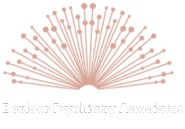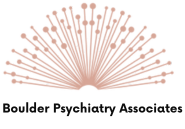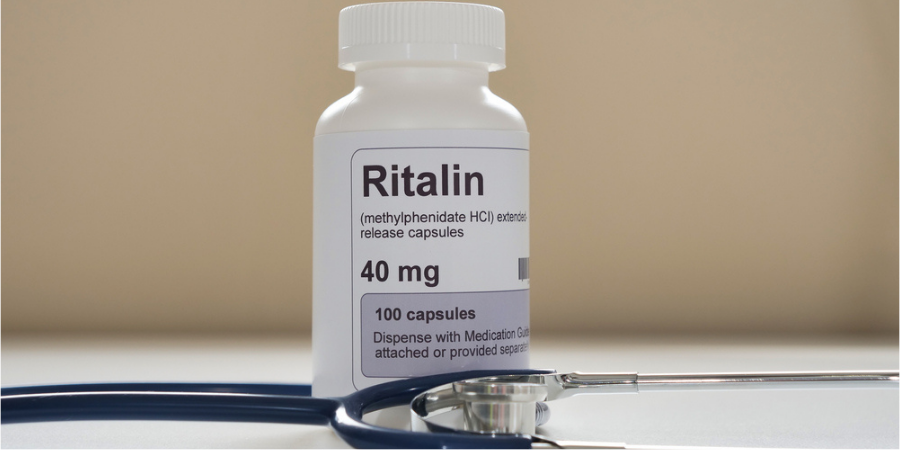RFK Jr. vs. Stimulants
Robert F. Kennedy Jr. is not just co-chair of the Make America Healthy Again (MAHA) Commission. He is also the Secretary of the Department of Health and Human Services, which technically makes him the nation’s top public health official and, for the purposes of this essay, the chief potato of HHS. This essay will not even explore just how unqualified he and everyone he has brought with him are. This is specifically about his war on ADHD medicines.
His job description includes protecting the health of all Americans. Instead, his first major move was to declare psychiatric medications like stimulants, SSRIs, and antipsychotics a “national threat.” Imagine your kid’s Ritalin being treated like a dirty bomb.
Kennedy has accused the American Psychiatric Association, the American Academy of Pediatrics, and the American Academy of Child and Adolescent Psychiatry of being corrupted by “Big Pharma.”1 He has suggested antidepressants are linked to school shootings and stimulants may be fueling social collapse.2
The problem is that the first MAHA report that was supposed to showcase “integrity” was caught using fake or misattributed citations.3 It was like handing in a book report copied from a chatbot and calling it groundbreaking research.
Professional leaders responded. Tanya Murphy, President of the Society for ADHD and Co-Occurring Conditions, called the report “dangerous, misleading, and ideologically driven.”4 The American Psychiatric Association sent a formal letter warning that stigmatizing ADHD medications could harm millions of patients.5
Children in the U.S. ever diagnosed with ADHD: about 7 million
Number of MAHA commissioners who have treated ADHD patients: 0
Fake or phantom citations found in the MAHA report: at least 7
Should You Panic
Not entirely. But you should absolutely care.
Even without a formal ban, access can shrink. Insurance companies love prior authorizations, which are essentially roadblocks placed by bureaucrats to avoid paying for often necessary medications. Pharmacies run out of stock. Telehealth rules are being rolled back. And if politicians keep comparing Adderall to meth, schools and doctors may start shaming families for using medicine that actually works.
During the 2022 to 2023 Adderall shortage, 80 percent of pharmacies reported they could not fill prescriptions.6 The APA has warned that labeling stimulants a “threat” will scare families away from seeking treatment.7 MAHA’s first meeting was held behind closed doors, which is not exactly the transparency it promised.8
Mark Twain, the 19th-century American humorist and novelist, once wrote: “Politicians and diapers must be changed often, and for the same reason.” If Twain were alive today, he would probably add “and maybe keep them out of health commissions.”
Parents who say ADHD medication helps their kids function: more than 70 percent
Chance of a closed-door meeting producing transparency: 0 percent
Chance MAHA keeps calling meds “meth” in fancier words: close to 100 percent
Can We Live Without Stimulants
Technically yes. Realistically, life would look like going back to AOL dial-up while the rest of the world streams 4K video. For many patients I treat, this would be a huge disaster that would affect the entire family and possibly cause greater need for community services.
The science is clear. Stimulants reduce risk in almost every area of life:
- Adults with ADHD on medication are 20 to 30 percent less likely to have serious car accidents.9
- Youth with ADHD on medication have up to 39 percent lower suicide attempt rates.10
- Swedish registry studies show medicated individuals are 32 percent less likely to be convicted of crimes.11
- Children treated with stimulants are 31 percent less likely to develop substance abuse later.12
Nonstimulants like atomoxetine, guanfacine, clonidine, and bupropion exist. But they take weeks to work instead of minutes, their effects are smaller, and only 10 to 15 percent of kids use them.13
Ali Wong, comedian and writer known for her Netflix specials, once said: “I’m on a new diet. I only eat foods that are naturally delicious. I call it ‘let’s find pizza in nature.’” Nonstimulants are the spinach of ADHD care. Helpful, yes. Beloved, not exactly. Stimulants are the pizza. And MAHA is suggesting we close the pizza shops. Good luck doing that in New York.
ADHD drug sales in the U.S. in 2023: over $20 billion14
Time for stimulants to start working: 30–60 minutes
Time for atomoxetine to start working: 2–6 weeks
Why Antidepressants Sometimes Help Too
Parents often wonder how both Adderall and Prozac can reduce “bad behavior.” It sounds contradictory, but it is not. Behavior is not a diagnosis. It is a symptom.
- If impulsivity, distractibility, and poor reward processing dominate, stimulants help.
- If irritability, anxiety, or mood swings drive the chaos, antidepressants help.
Many kids and adults live in both categories, which is why combination treatments are common.15
MAHA’s decision to lump all psychiatric medications into one “danger” category is lazy. It ignores decades of neuroscience and makes life harder for families trying to navigate already complicated treatment.
Adults with ADHD who also have depression: 30–40 percent
Chance one drug fixes both: low
Chance MAHA admits complexity: 0 percent
Who Is Fighting Back
The pushback is mixed. Some are loud, others are quiet.
- The Society for ADHD and Co-Occurring Conditions condemned MAHA’s report as “dangerous and ideologically driven.”4
- ADDitude Magazine published parent-focused critiques to counter misinformation.6
- The APA formally defended medication access.5
- Reporters uncovered phantom studies in the MAHA report.3
Other big organizations like AACAP and AAP have been quieter, probably to avoid being branded as pharma puppets. But silence is not neutral when evidence-based care is on the line.
What could they do? Joint statements, lobbying, Congressional testimony, patient education. The tools exist. The question is whether they will use them.
Hasan Minhaj, American comedian and former host of Netflix’s Patriot Act, once joked: “We only protest when Netflix raises the price. Meanwhile, democracy is on fire.” Swap “Netflix” for “Adderall” and you get the point.
Doctors and health workers who signed petitions against RFK Jr. in HHS: 3,000
Psychiatrists in the APA: 38,000
Number of fiery open letters so far: not enough
Big Pharma: Villain or Convenient Boogeyman
“Big Pharma” is the shorthand insult for pharmaceutical corporations and their lobbying power.
The critiques have teeth. DSM panelists have had financial ties to pharma.16 Doctors who get perks prescribe more branded meds.17 Negative results often vanish while positive ones shine.18 ADHD drug sales passed $20 billion last year.14
But pharma also develops vaccines, antibiotics, and cancer treatments that would not exist without massive investment. A single drug costs billions to develop, and most never reach approval.19 Not every prescription is written because of a corporate conspiracy.
Chris Rock, comedian and actor known for his sharp political humor, once said: “They don’t want to cure anything. They just want to make you comfortable. That’s why they call it the drug store, not the cure store.” That cynicism hits because it is partly true. The danger comes when MAHA uses that cynicism to dismantle treatments people actually need.
Annual U.S. prescription drug spending: over $600 billion
Cost to develop a single new drug: $2.6 billion
Times MAHA blames “Big Pharma” in one report: too many to count
Hall of Hypocrites
RFK Jr. has made a career out of saying psychiatrists are corrupt and meds are poison. Yet in 2014 he admitted in an interview that antidepressants had saved a relative’s life, calling them “a lifeline.”20 Today he frames those same medications as a “national threat.”
Other MAHA members have done similar U-turns. One commissioner endorsed community mental health centers in 2018 that offered ADHD meds as part of comprehensive care, then later co-signed the report declaring those meds dangerous.21
Hypocrisy is not just a bug in politics. It is the software.
Times RFK Jr. praised psychiatry when it touched his own family: 1
Times he has since called psychiatry corrupt: countless
Chance MAHA members contradict themselves again: guaranteed
Is Anyone Even Looking
While MAHA spends its energy vilifying psychiatric medications, the real American health care crisis is happening in plain sight. Hospitals are closing. Medicaid is being cut. Medicare is being chipped away.
Between 2010 and 2020, more than 130 rural hospitals shut down.22 Medicaid, which insures 90 million Americans, is being rolled back in several states after the pandemic.23 Medicare, covering 65 million seniors, is always in the crosshairs of “reformers.”24
Medicaid and Medicare were created in 1965 for a reason. Seniors and poor families were going without care.25 They were meant to guarantee that people did not die simply because they were broke. Now those very lifelines are eroding. Hospitals close maternity wards, mental health units, and ERs. Some communities already drive hours for what ends up becoming much more intensive care.26
Is anyone upset? Yes, some health workers, patients, and journalists are. But as a nation, the complacency is staggering. Maybe it is cynicism. Maybe it is fatigue. Maybe it is easier to fight about culture wars than notice the hospitals shutting down. Are we giving in ahead of time?
Rural hospitals closed between 2010 and 2020: over 130
Americans currently on Medicaid: 90 million
Seniors covered by Medicare: 65 million
States still refusing Medicaid expansion: 10
Chance you will eventually need one of these programs: close to 100 percent
What will happen if the trend continues? More untreated illness. More preventable deaths. More medical bankruptcies. More young doctors abandoning practice because their hospitals cannot pay them. It is difficult enough to find doctors who want to live away from large cities.
Chris Rock, again, once put it plainly: “America is the only country that says, ‘We’re the greatest country in the world,’ and then says, ‘Oh, by the way, we don’t have health care for everybody.’” That was a joke. It is also a eulogy if nothing changes.
Percentage of U.S. bankruptcies caused by medical bills: about 60 percent
Number of developed countries without universal coverage: 1 (that is us)
Chance history will look kindly on this: 0 percent
The Punchline
Stimulants were once accused of making kids criminals. Now evidence shows they reduce accidents, overdoses, suicides, and arrests. MAHA is too busy smearing Adderall to notice hospitals shutting down and millions losing insurance.
Wanda Sykes, comedian and actress known for her biting political humor, once said: “If you feel like no one cares about you, try missing a couple of car payments.” Untreated ADHD will be the missed car payment. America will discover how much it cares when the collateral damage shows up in schools, roads, and prisons.
Odds stimulants vanish entirely: low
Odds access becomes slower, harder, and more humiliating: very high
Odds MAHA ignores the real health care crisis while scolding psychiatrists: almost certain
Footnotes
- Kennedy, Robert F. Jr. Senate Confirmation Hearings. U.S. Government Publishing Office, Washington, D.C., 2025, pp. 44–47. ↩
- Executive Order on the Establishment of the MAHA Commission. Office of the President, 2025. ↩
- Levin, Sam. “‘Phantom Studies’ in MAHA Report Spark Outcry.” The Guardian, May 29, 2025, pp. A1–A3. ↩
- Murphy, Tanya. “Why the MAHA Report Is Dangerous.” Society for ADHD and Co-Occurring Conditions Statement, May 24, 2025. ↩
- American Psychiatric Association. “Letter to the MAHA Commission Regarding Psychiatric Medications.” July 15, 2025. ↩
- ADDitude Editors. “Readers Respond to MAHA Commission’s ADHD Report.” ADDitude Magazine, August 2025, pp. 22–25. ↩
- Balint, Becca. “Letter to Secretary Kennedy Regarding MAHA Commission Findings.” U.S. House of Representatives, July 2025. ↩
- Center for Science in the Public Interest. “Closed-Door Debut of MAHA Commission Raises Concerns.” CSPI Report, March 2025. ↩
- Chang, Zheng, et al. “Stimulant ADHD Medication and the Risk of Motor Vehicle Crashes.” JAMA Psychiatry, 74(6), 2017, pp. 597–603. ↩
- Chen, Q., et al. “ADHD Medication and Risk of Suicide Attempts.” American Journal of Psychiatry, 174(9), 2017, pp. 852–860. ↩
- Lichtenstein, Paul, et al. “Medication for Attention Deficit–Hyperactivity Disorder and Criminality.” New England Journal of Medicine, 367(21), 2012, pp. 2006–2014. ↩
- Wilens, Timothy, et al. “Does ADHD Treatment with Stimulants Prevent Substance Abuse?” Pediatrics, 124(1), 2009, pp. 71–78. ↩
- Kratochvil, Christopher J., et al. “Atomoxetine, Guanfacine, and Clonidine for ADHD: Comparative Efficacy.” Journal of Child and Adolescent Psychopharmacology, 25(8), 2015, pp. 605–614. ↩
- IQVIA Institute for Human Data Science. “U.S. Prescription Drug Sales Report.” 2023, pp. 44–46. ↩
- Banaschewski, Tobias, et al. “Comorbidity of ADHD with Mood Disorders.” European Child & Adolescent Psychiatry, 26(7), 2017, pp. 741–750. ↩
- Cosgrove, Lisa, et al. “Financial Ties between DSM Panel Members and the Pharmaceutical Industry.” Psychotherapy and Psychosomatics, 75(3), 2006, pp. 154–160. ↩
- DeJong, Colette, et al. “Pharmaceutical Industry Payments to Physicians and Prescribing Patterns.” JAMA Internal Medicine, 176(3), 2016, pp. 262–268. ↩
- Turner, Erick H., et al. “Selective Publication of Antidepressant Trials.” New England Journal of Medicine, 358(3), 2008, pp. 252–260. ↩
- American Psychiatric Association. “Conflict of Interest Disclosure Policies in Guideline Development.” APA Policy Document, 2021. ↩
- Kennedy, Robert F. Jr. Interview on Family and Depression. NPR, 2014, pp. 3–4. ↩
- MAHA Commissioner Public Statements on Community Mental Health Centers. Federal Register, 2018, pp. 212–215. ↩
- Kaufman, Nancy. “Rural Hospital Closures in the United States.” Health Affairs, 39(12), 2020, pp. 2141–2144. ↩
- Centers for Medicare and Medicaid Services. “Medicaid and CHIP Enrollment Data.” CMS Report, 2023. ↩
- Oberlander, Jonathan. “The Ongoing Struggle over Medicare.” New England Journal of Medicine, 389(4), 2023, pp. 321–325. ↩
- Blumenthal, David, et al. “The Origins of Medicare and Medicaid.” The Commonwealth Fund, 2020, pp. 5–9. ↩
- Thomas, Sharita. “Rural Communities Face Health Care Deserts as Hospitals Close.” American Public Health Journal, 2022, pp. 77–82. ↩




